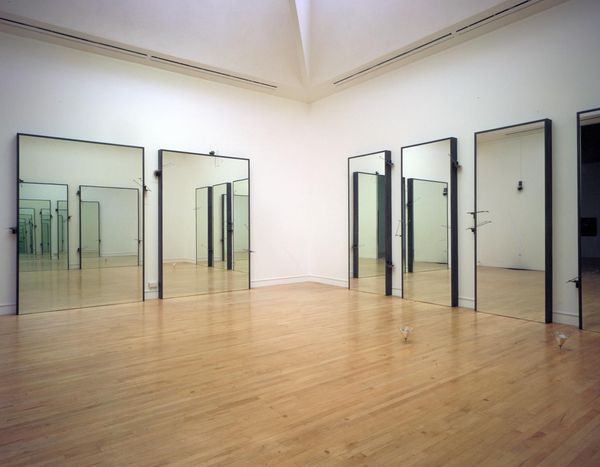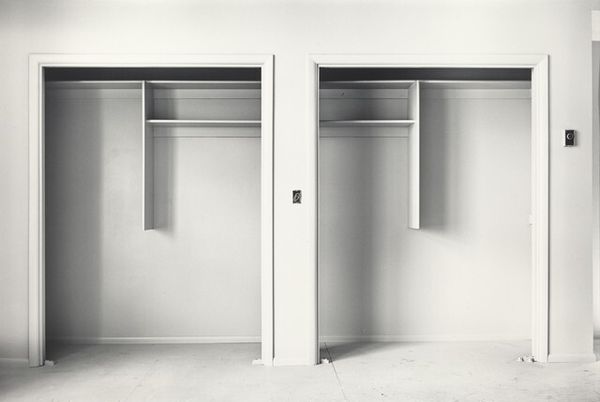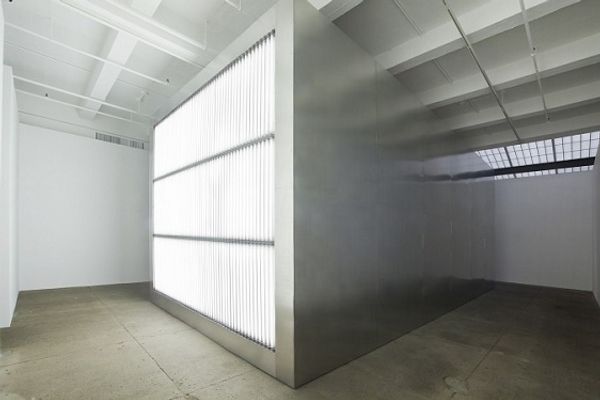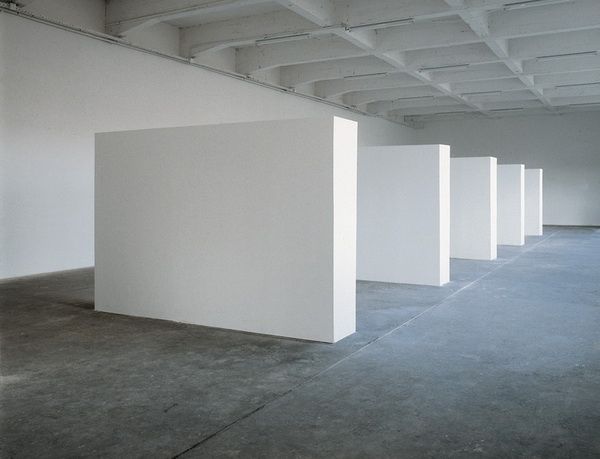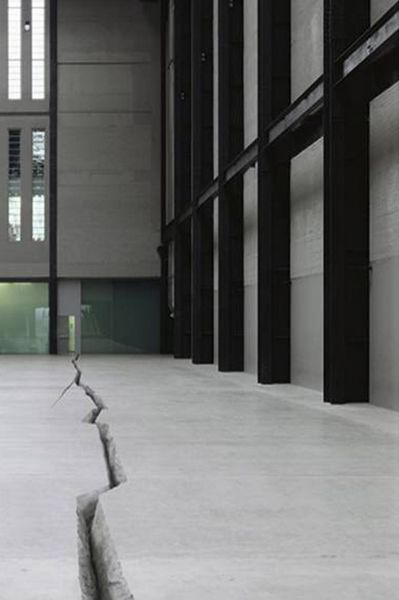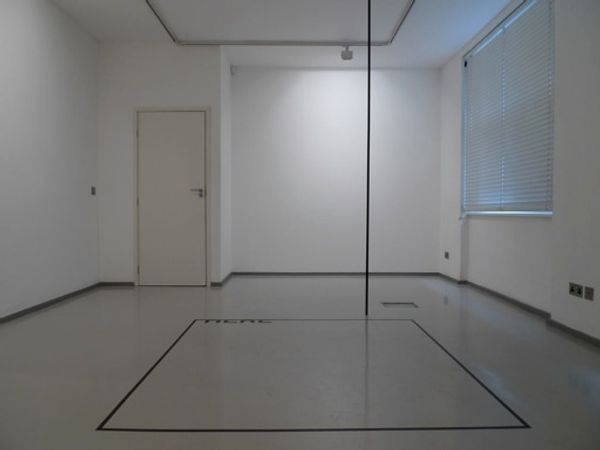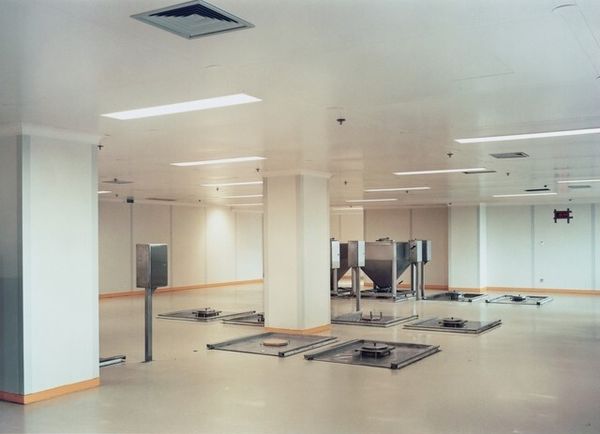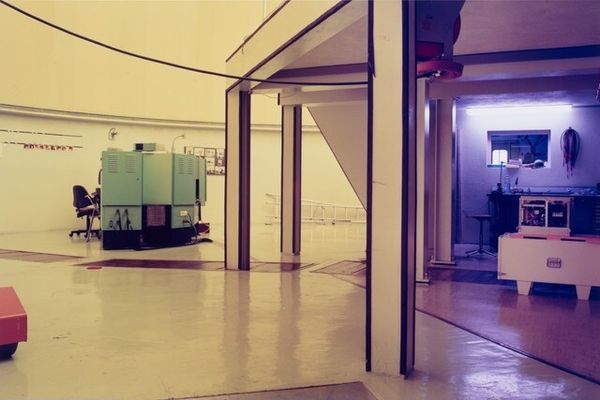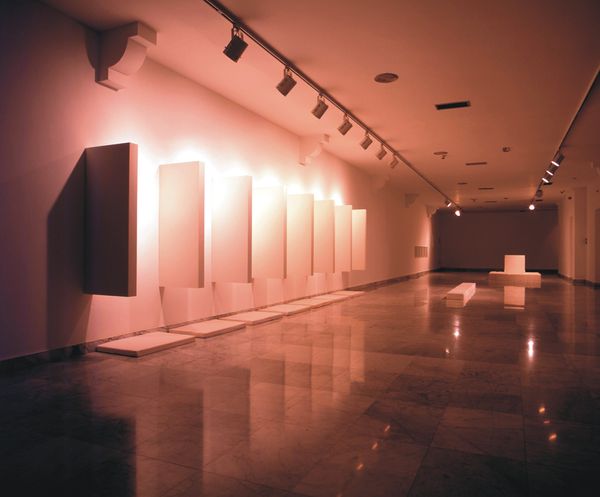
Dimensions: displayed: 2400 x 4620 mm, length variable
Copyright: © Carsten Höller, courtesy Esther Schipper, Berlin | CC-BY-NC-ND 4.0 DEED, Photo: Tate
Curator: Carsten Holler's installation "Sliding Doors" uses mirrored automatic doors to create a seemingly endless corridor. The piece is part of the Tate Collection, and its dimensions vary with each installation, but the effect remains consistently disorienting. Editor: Whoa, déjà vu city! It feels like stepping into a funhouse mirror maze designed by a minimalist architect. Sort of sterile but also super playful. Curator: The reflections invite thoughts about identity, perception, and infinity. Mirrors have symbolized truth, vanity, and portals to other worlds for centuries. Editor: Totally! I can't help thinking about how we're constantly projecting different versions of ourselves, and this just makes it literal. Plus, the automated doors add an element of unpredictability. Curator: Precisely, Holler often explores the psychological effects of his installations. The repetition and mirrored space could trigger feelings of unease or even anxiety in some viewers, reflecting our own self-awareness. Editor: It’s like a shiny, architectural metaphor for the endless scroll of social media, reflecting us back at ourselves. I’ll never look at automatic doors the same way. Curator: It leaves us to consider how our sense of reality is constructed. Editor: True, it's food for thought—served with a side of vertigo!
Comments
Join the conversation
Join millions of artists and users on Artera today and experience the ultimate creative platform.
tate 6 months ago
⋮
Sliding Doors was originally commissioned for the Tate Modern exhibition Common Wealth in 2003. It was made with the spaces of Tate Modern in mind and consists of a series of five equidistant electronic sliding doors with a mirrored surface. The installation can be entered from two directions, creating the possibility of alternately confronting one’s own endless reflection or the unexpected presence of another visitor. Like Höller’s slides in the Turbine Hall, this work encourages interaction and provides an unexpected transition from one gallery space to another.. Gallery label, December 2006
